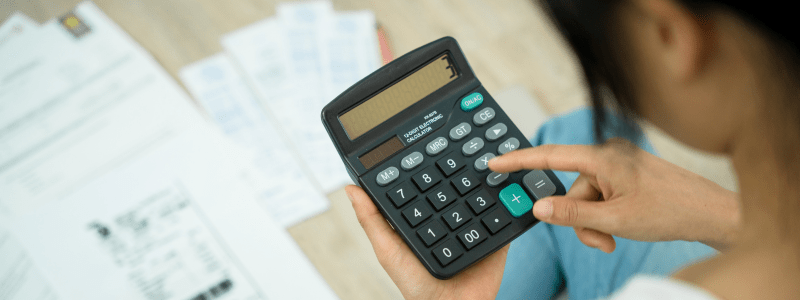
Bad debt expense is a vital part of running a business, but understanding how to calculate bad debt expense can save you from unexpected financial shortfalls. So, what exactly is bad debt expense, and why is it important to calculate it accurately? Let’s dive in and find out.
Understanding Bad Debt
Definition of Bad Debt
Bad debt refers to the amount owed to a company that it considers unlikely to be collected. Essentially, it’s money you’ve lent out in the form of credit sales that you’re not expecting to see again.
Common Causes of Bad Debt
Bad debt can arise from various situations such as customer insolvency, disputes over the goods or services provided, or simply poor credit management practices. Recognizing the causes can help in mitigating future risks.
Methods to Estimate Bad Debt Expense
There are primarily two methods to estimate bad debt expense: the Direct Write-Off Method and the Allowance Method.
Direct Write-Off Method
This method involves writing off bad debts only when specific accounts are deemed uncollectible. It’s straightforward but not the most accurate for financial reporting purposes.
Pros and Cons of Direct Write-Off Method
- Pros: Simple and straightforward; does not require estimation.
- Cons: Can lead to significant discrepancies in financial statements; not compliant with the matching principle in GAAP.
Allowance Method
The Allowance Method, on the other hand, estimates bad debts before they occur. This method aligns more closely with the matching principle by recognizing expenses in the same period as the related revenues.
Pros and Cons of Allowance Method
- Pros: Provides a more accurate financial picture; complies with GAAP.
- Cons: Requires estimation, which can be subjective.
Calculating Bad Debt Expense Using Allowance Method
There are two common approaches within the Allowance Method: the Percentage of Sales Method and the Accounts Receivable Aging Method.
Percentage of Sales Method
This method estimates bad debt expense as a percentage of total credit sales.
Step-by-Step Calculation
- Determine the percentage based on historical data.
- Apply the percentage to the total credit sales for the period.
Example Calculation
If your historical data suggests that 2% of credit sales are uncollectible and your credit sales for the period are $100,000, then:
Bad Debt Expense = 2% of $100,000 = $2,000
Accounts Receivable Aging Method
This method estimates uncollectible accounts based on the age of the receivables.
Step-by-Step Calculation
- Categorize receivables by age.
- Apply different percentages of uncollectibility to each category based on historical data.
- Sum up the estimated uncollectible amounts for each category.
Example Calculation
Assume you have the following aged receivables:
- 0-30 days: $50,000 (1% uncollectible)
- 31-60 days: $30,000 (5% uncollectible)
- 61-90 days: $20,000 (10% uncollectible)
- Over 90 days: $10,000 (20% uncollectible)
Bad Debt Expense = (1% of $50,000) + (5% of $30,000) + (10% of $20,000) + (20% of $10,000)
= $500 + $1,500 + $2,000 + $2,000
= $6,000
Recording Bad Debt Expense in Financial Statements
Journal Entries for Direct Write-Off Method
When an account is deemed uncollectible:
- Debit: Bad Debt Expense
- Credit: Accounts Receivable
Journal Entries for Allowance Method
When estimating bad debts:
- Debit: Bad Debt Expense
- Credit: Allowance for Doubtful Accounts
When writing off an account:
- Debit: Allowance for Doubtful Accounts
- Credit: Accounts Receivable
Impact of Bad Debt on Financial Statements
Impact on Income Statement
Bad debt expense reduces the net income reported on the income statement, reflecting the cost of credit sales that are unlikely to be collected.
Impact on Balance Sheet
On the balance sheet, bad debts reduce accounts receivable through the allowance for doubtful accounts, providing a more accurate picture of expected cash inflows.
Managing and Reducing Bad Debt

Effective Credit Policies
Implementing stringent credit policies can minimize the risk of bad debts. This includes setting credit limits and payment terms that align with the customer’s creditworthiness.
Regular Monitoring of Receivables
Regularly reviewing accounts receivable helps identify potential bad debts early, allowing for timely interventions.
Customer Creditworthiness Assessment
Assessing the creditworthiness of customers before extending credit is crucial. This can be done through credit reports, financial statements, and payment history.
Technological Tools for Managing Bad Debt
Accounting Software
Modern accounting software can automate the tracking and management of receivables, making it easier to spot and address bad debts.
Predictive Analytics
Using predictive analytics can help forecast which accounts are likely to turn bad, allowing for proactive measures.
Best Practices for Bad Debt Management
Regular Review of Credit Policies
Periodically reviewing and updating credit policies ensures they remain effective and relevant.
Employee Training and Awareness
Training employees on credit management practices and the importance of timely follow-ups can significantly reduce bad debts.
Customer Relationship Management
Maintaining good relationships with customers can lead to better communication and faster resolution of payment issues.
Conclusion
Bad debt is a reality that businesses must contend with, but with the right strategies, it can be managed effectively. By understanding how to calculate bad debt expense using different methods and implementing best practices, you can mitigate its impact on your financial health.
FAQs
1. What is the difference between bad debt and doubtful debt?
Bad debt is considered uncollectible and is written off, whereas doubtful debt is still being pursued for collection but is estimated to have a low probability of being collected.
2. How often should businesses review their bad debt expense?
Businesses should review their bad debt expense at least quarterly to ensure accurate financial reporting and proactive management of receivables.
3. Can bad debt expense be recovered?
In some cases, bad debt can be recovered if the customer eventually pays. When this happens, it is recorded as a recovery of bad debt.
4. How does bad debt expense affect cash flow?
Bad debt expense reduces the net income, impacting cash flow indirectly by decreasing the cash available from operations.
5. What are some common pitfalls in managing bad debt?
Common pitfalls include lax credit policies, inadequate monitoring of receivables, and failing to act promptly on overdue accounts.
To understand more about how effective financial planning can help manage bad debt, check out our article on WHAT IS BUDGETING AND WHY IS IT IMPORTANT?
